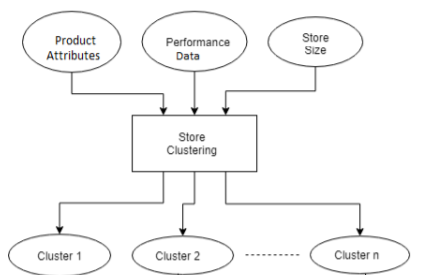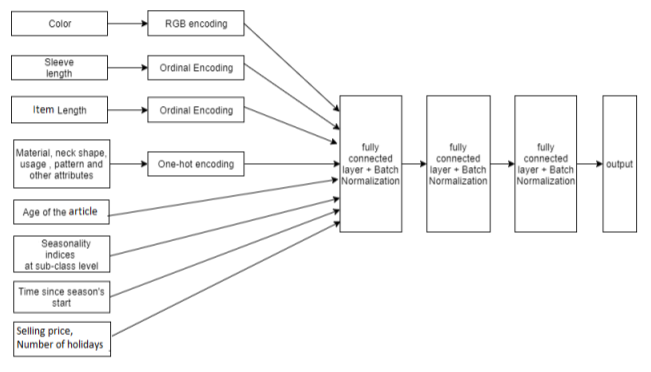- 分享主题:New Product Forecast
- 论文标题:Product age based demand forecast model for fashion retail
- 论文链接:https://arxiv.org/pdf/2007.05278.pdf
1.Summary
The problem to be solved in this article is the new product forecast of fashion retail. Since there is no historical sales data for new products, we can only use the sales data of other old products for prediction. Two clothing data sets (non-public) were used in the experiment. The author first uses clustering to group stores, and then uses neural network and xgboost to build a model for each group of stores, and uses various product attributes, external attributes (seasonal factors, weeks after product launch, etc.) and existing product sales data to predict product sales. After the prediction is completed, the predicted quantities of all categories of stores are added. Different from other new product prediction articles, this paper uses seasonal factors and weeks after product launch as feature input, because the commodities in these two data sets are very relevant (each dataset is the same category of clothing), new and old products in the same store can be considered to have similar seasonal factors. Because the extraction of seasonal factors in this article is not very clear, if I read some time series prediction articles about seasonality, I may better understand the important role of seasonal factors and the method of extracting features.2.你对于论文的思考
和其它一些新品预测文章不同的是,这篇论文利用了季节性因素、产品上市后的周数作为特征输入,在消融实验中也表明了产品上市后的周数对最终的结果有很大的贡献。虽然这篇文章主要是讨论产品的上市后的时间对销量预测的影响,但是我觉得也可以对季节性因素进行更深入的挖掘,毕竟这是服装产品的新品预测,季节对于产品的销量影响还是挺大的,也可以对季节性因素进行消融实验,探查季节性因素的重要性。3. 其他
门店聚类

baseline
(1)KNN。找到去年同一季节有销量的相似度前3的相似品,再根据相似度分数加权求出新品的销量;
(2)不使用age属性(产品上市后的周数),使用其它可用的属性(颜色等产品属性、假日等外部属性),先对这些属性中无法直接作为输入的属性进行编码,再将它们作为输入,分别放到Xgboost和ANN中,由此形成“Baseline Xgboost”和“Baseline DL”两个baseline。本文使用的模型
Age Based Model:与Baseline Xgboost和Baseline DL的区别是,Age Based Model额外使用了age属性。
下图为Age Based DL Model:
实验结果
如下图所示,Age Based Model在两个数据集上的效果都远远好于baseline。

